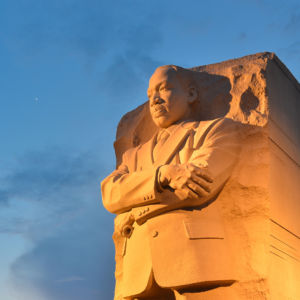After the tragic shootings in Dallas, New York Knicks basketball player Carmelo Anthony took to social media. “Shooting 11 cops and killing 5 WILL NOT work,” he wrote on Instagram. “… Take Charge. DEMAND CHANGE.”
LeBron James called Anthony’s post “on point,” and Michael Irvin, Bradley Beal and Serena Williams raised their voices, too. At the ESPYs, Anthony and James were joined by Dwayne Wade and Chris Paul, and Anthony promised more in a few weeks at the Summer Games in Rio.
That said, today’s prominent athletes have to go some to top the efforts of such superstars a half-century ago. From the Black Power salute by Tommie Smith and John Carlos to Muhammad Ali’s stand against the Vietnam War, time and again sports’ best led by example. They took it upon themselves to not only talk the talk, but walk the walk.
When the city of Detroit was consumed by riots and fire, the worse riots in our country since the Civil War, Tigers outfielder Willie Horton headed directly to the scene. He left the home clubhouse in such a hurry that he was still wearing his baseball jersey. Once he arrived, he climbed atop a car and pleaded with the demonstrators to disperse. Not enough heeded his call, but decades later Horton said that he would gladly try again.
“People knew immediately who I was,” Horton said. “It looked like a war out there. I’ve never seen stuff like that — burning buildings, looting, smoke everywhere. They said, ‘Willie, you best go home.’”
Horton reluctantly left that evening. But he soon returned to the streets, doing his utmost to change things in the Motor City.
In New York, Jets quarterback Joe Namath didn’t climb atop any cars. But when it came to race relations, especially on his own team, nobody was better at bringing people together.
Then and now many teams break into black-white groupings at meal times or on the road. Yet sportswriter Paul Zimmerman watched Namath “plunk his tray down at one of those all-black tables, and then a few white players join him, and soon it becomes a mixed table. I’ve seen this happen too many times to assume it’s accidental. The same thing on buses. I’ve seen Namath integrate a little knot of black players by his presence.”
In the 1960s, many considered the St. Louis Cardinals to be the best team in baseball. Their roster not only included blacks and whites, but Latino stars, too. Long before Jesse Jackson coined the phrase, the Cardinals “were the rainbow coalition of baseball,” Bob Gibson once said.
In 1968, the morning after Dr. Martin Luther King’s assassination in Memphis, Gibson got into a heated conversation with his catcher, Tim McCarver. After telling McCarver that he couldn’t possibly comprehend what it was like to a black person and that it was impossible for whites, no matter how well intentioned, to totally overcome prejudice, Gibson walked away from his batterymate.
But McCarver, who had grown up in Memphis, where King had been struck down, refused to let the conversation drop. In following after Gibson, McCarver found himself in “the unfamiliar position of arguing that the races were equal and that we were all the same.”
Years later, McCarver wrote that “Bob and I reached a meeting of the minds that morning. That was the kind of talk we often had on the Cardinals.”
Whatever the dynamics of their particular teams, many of today’s athletes do their best to insulate themselves from the rest of the world. Thanks to the soaring salaries, they can live at the end of another gated cul-de-sac.
Back in the late 1960s, the closest that we’ve come to a second Civil War in this country, according to author Hampton Sides, many professional athletes couldn’t afford such luxury and celebrity. In addition, many also served in the National Guard. Their ranks included Mickey Lolich, Eddie Brinkman and Nolan Ryan.
“Back then I was juggling two worlds, two commitments, between baseball and my Guard duty,” said Ryan, who was with the New York Mets at the time. “I was no different than a lot of others.”
Even though he didn’t have any military obligations, Horton tried his best to remain part of his community, too. He went out of his way to make close friends across the country.
When the ballclub went on the road, “I wanted to know there was somebody I could call, somebody I could talk to,” Horton said. “What I was doing was making sure that I had a home everywhere I went playing ball. In 1968 especially, that’s how I got by.”
The summer after Detroit burned, the ballclub reached the World Series for the first time in 23 years. Their opponent was the champion Cardinals. In a thrilling seven-game series, the Tigers prevailed as a battered community rallied behind them.
Moments after the final out, just past four in the afternoon, the streets of Detroit, where they had been riots the summer before, filled with fans celebrating their team’s victory. Confetti rained down from the city’s tallest buildings. While Mayor Jerome Cavanaugh ordered his fire and police squads to be on alert, there was no need as tens of thousands peacefully gathered downtown.
Decades later, Horton sometimes still walks the streets near Detroit’s new ballpark, Comerica Park. He knows many of the store owners, even some of the homeless. Once at the ballpark, he often starts at the top level on game days, looping around the main concourse, where his statue is one of the half-dozen Tigers immortalized there.
“Some people say we saved this city by winning in ’68,” Horton says. “But when I look back on it, in being there for them, in staying a part of this community, they also saved us.”

